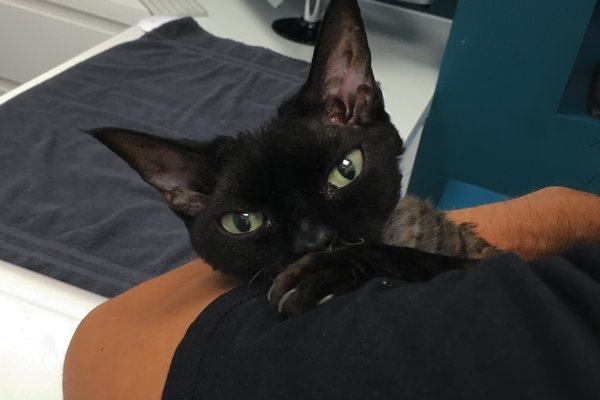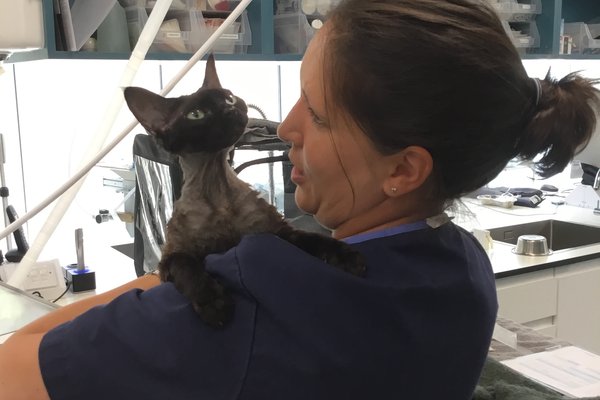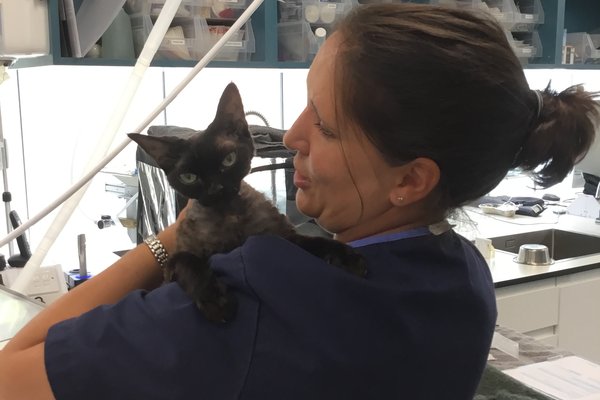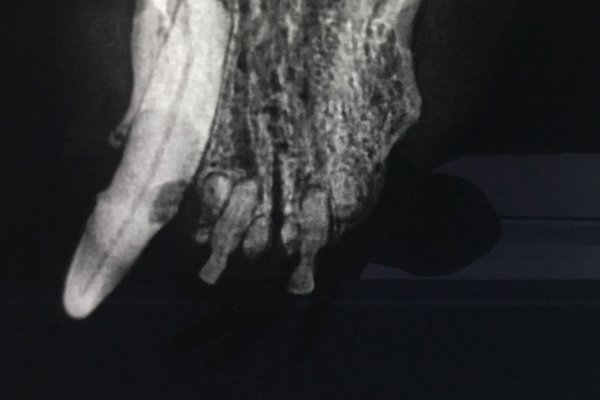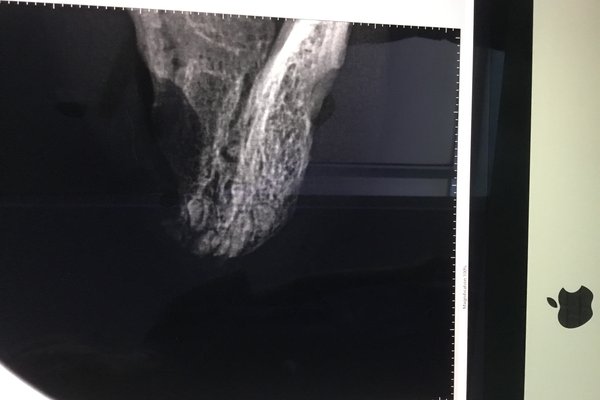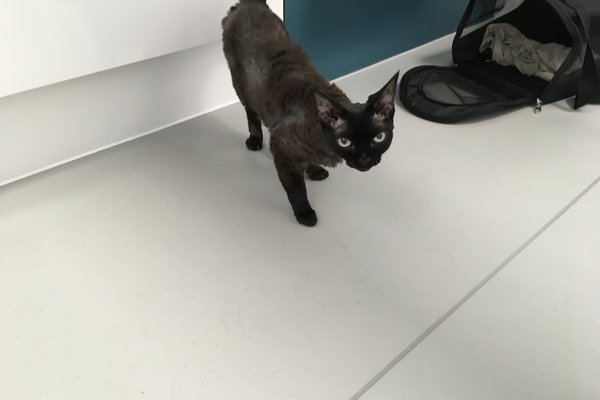Meet Lola, she is a 5-year-old Devon Rex cat. She initially came to visit as she was biting at her skin and suffering hair loss.
When she came in we gave her a thorough nose to tail examination. There were no obvious lesions evident on her skin, other than hair loss so we took some skin scrapes to see if we could see any parasites, these samples didn’t show anything but unfortunately due to the nature of certain parasites sometimes we don’t see them even though they may be lurking in small numbers!
Itchy (pruritic) skin can be caused by a number of different conditions the mains ones being; parasites; food intolerance or atopy which is basically environmental allergens i.e. house dust mites, moulds and pollens, everything else! We decided the best course of action initially was to start Lola on a food trial using a specific Hypoallergenic diet.
During the consultation, we checked her teeth and gums, this is when we noticed Lola had fractured her left upper canine tooth right at the gum line root and had nasty periodontitis around the upper last premolar. If you fracture your tooth and it involves the pulp (sensitive part in the middle containing blood vessels and nerves) it will be painful and uncomfortable.
Put yourself in their paws – if you had the same injury what pain do you think you would feel?As we always say, cats hide their pain very well and 9 out of 10 times we are none the wiser.
We made immediate plan for a Comprehensive Oral Health Assessment and Treatment (COHAT) and we decided at the same time we would take some skin biopsies. Skin biopsies are very simple and involve using a biopsy punch that is very similar to a tiny cookie dough cutter! We use this to make small punches in the skin and take the samples we require.
Our COHATS include full mouth x-rays (feline dentistry can’t be performed adequately without x-rays) as well as assessing the degree of damage of the fractured canine we were amazed to see how bad a large number of her other teeth were under the gum line. We went on to surgically remove a very large number of teeth that were painful, had missing roots and decay – none of this was obvious to the owners as she was still eating ok!
Lola recovered wonderfully from the procedure and started eating well immediately afterwards. At her final post-procedure check-up, her lovely carers reported Lola was SO much happier (even though she was still happy in the first place). She now loves having her mouth and face touched where she previously hated it, she would do more face-rubbing, her whiskers had start to grow back and most interestingly she was chewing her coat much less frequently and her coat was growing back
Her skin biopsy results showed evidence of allergic skin disease as we suspected so management of this will be dependent on her reponse to the food trial in the first instance.
Lola was a delight to have in the clinic, lots of cuddles were had.
Well done Lola.


